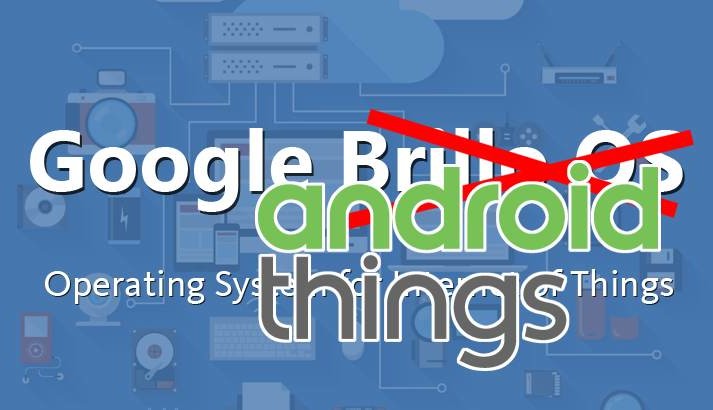Brillo is out, please welcome Android Things
December 26, 2016
on
on

After several months of community experience and feedback Google’s Brillo operating system will continue as Android Things. This means that devices will run a version of Android that supports devices with or without a display.
With this shift Brillo developers actually become Android developers who may use Android Studio and the Android framework APIs, and then run and debug APKs on Android Things devices. Not only does this imply a simpler and faster build experience, it also means that the Java programming language can be used.
This also means that code previously written for Brillo must be rewritten and applications built on the previous Brillo code base will need to be ported over, but code can now use commonly available libraries and the Android framework APIs and tools that simplify access to peripheral interfaces such as GPIO, SPI, I2C, UART, and PWM. Extra support libraries will be provided to support commonly available hardware peripherals, further reducing developer time spent.
Glad I didn't jump the Brillo bandwagon.
With this shift Brillo developers actually become Android developers who may use Android Studio and the Android framework APIs, and then run and debug APKs on Android Things devices. Not only does this imply a simpler and faster build experience, it also means that the Java programming language can be used.
This also means that code previously written for Brillo must be rewritten and applications built on the previous Brillo code base will need to be ported over, but code can now use commonly available libraries and the Android framework APIs and tools that simplify access to peripheral interfaces such as GPIO, SPI, I2C, UART, and PWM. Extra support libraries will be provided to support commonly available hardware peripherals, further reducing developer time spent.
Glad I didn't jump the Brillo bandwagon.
Read full article
Hide full article


Discussion (0 comments)